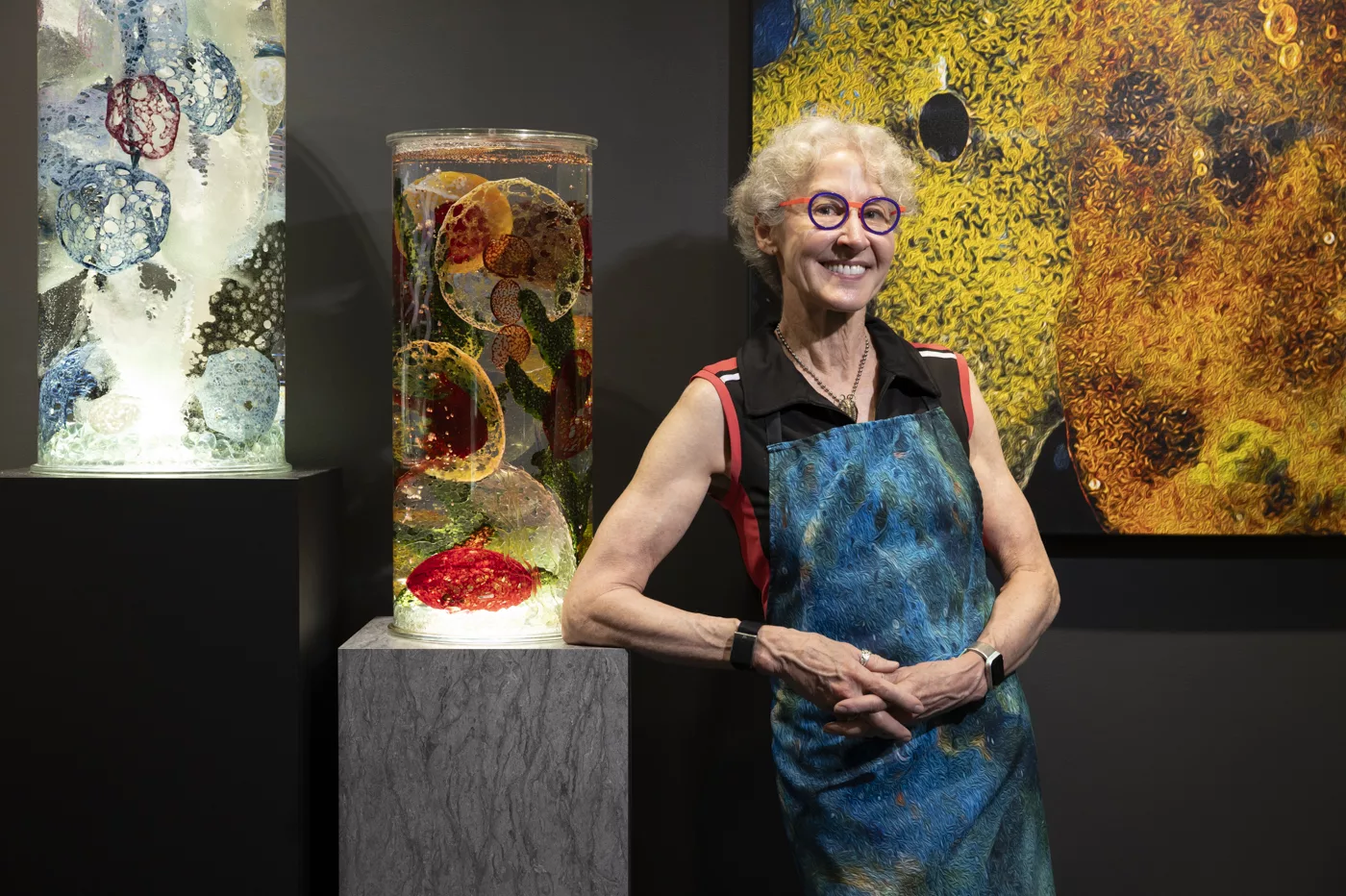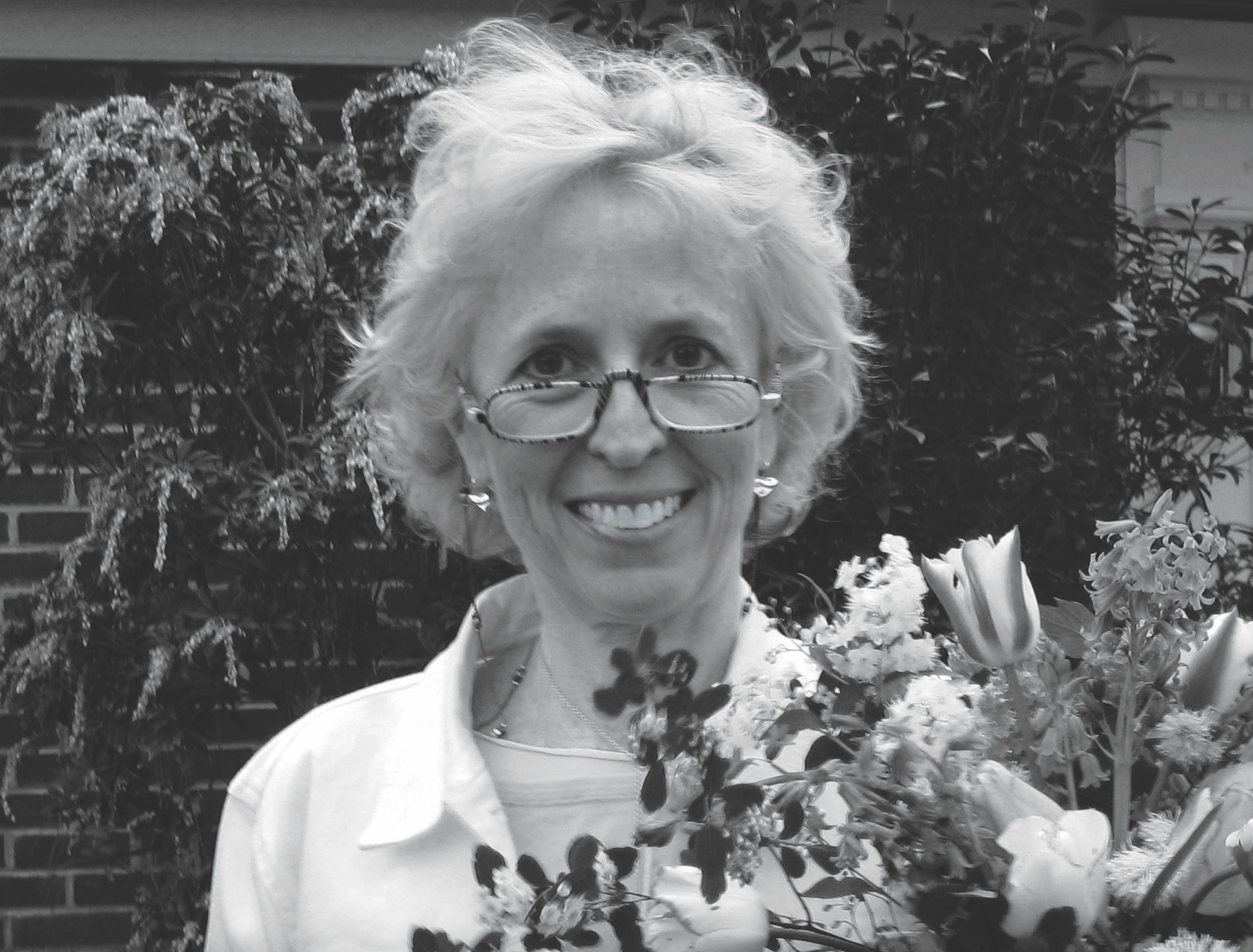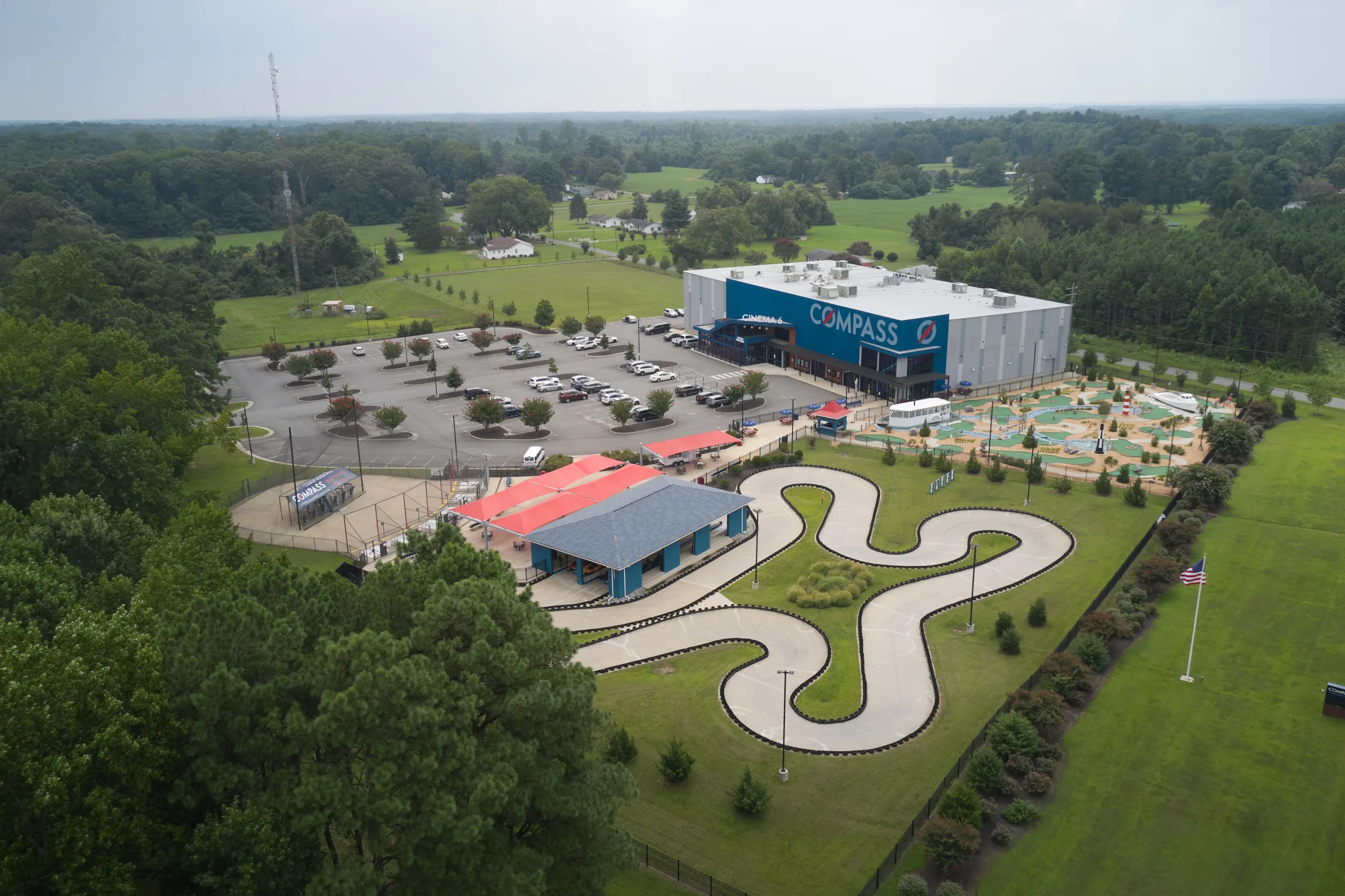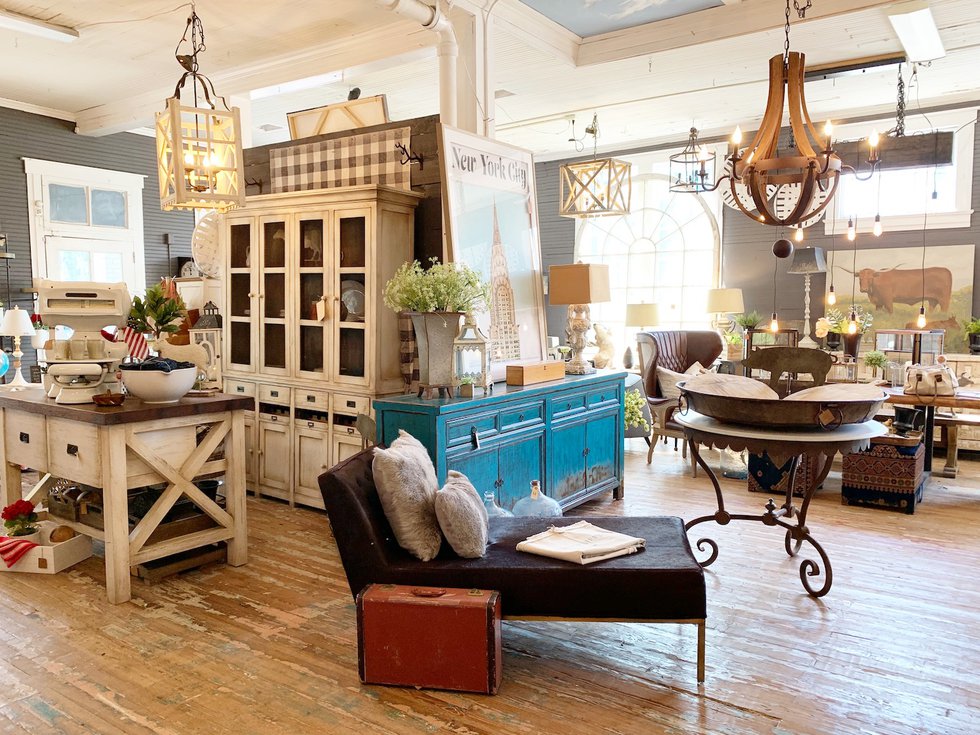There’s no way to adequately describe Alison Sigethy’s work. Entering her Torpedo Factory studio in Alexandria is like meeting the love child of JK Rowling and Neptune, the Roman god of the seas. The name—Fantastical Glass—is the first clue, and then the assortment of clear cylindrical sculptures comes into focus. They are of varying sizes and positioned on stands of different heights for optimal viewing. Filled with a clear liquid, they glow and softly bubble, like giant champagne flutes. Each brims with color. Some subtle—variations of soft blues or greens—and others brilliant jewel-tones.
Closer inspection reveals that each cylinder is home to a collection of what loosely resembles underwater sea creatures. That iridescent spikey shell looks like a sea urchin—but not quite. And the suspended disc behind a blade of something kelp-like might be a sand dollar—sort of.
Nothing is quite what it seems. Which is why Fantastical Glass is so appropriately named. Here, those bubbling glass cylinders house Sigethy’s invented underwater creatures that captivate visitors, transporting them into imaginary oceanic worlds. She calls them Sea Cores and explains, “The name and shape are loosely based on core samples scientists take to study the ocean, but they don’t represent actual sea life. Instead, I invent my own inhabitants for these magical worlds.”
They’re mesmerizing, these kinetic sea-like sculptures that blend movement, light, and sound. And they’ve earned Sigethy a reputation as one of the region’s most innovative glass artists. She welcomes visitors into her studio with a friendly confidence and her own brand of kinetic energy, like she knows she’s the sole creator of something totally unique.
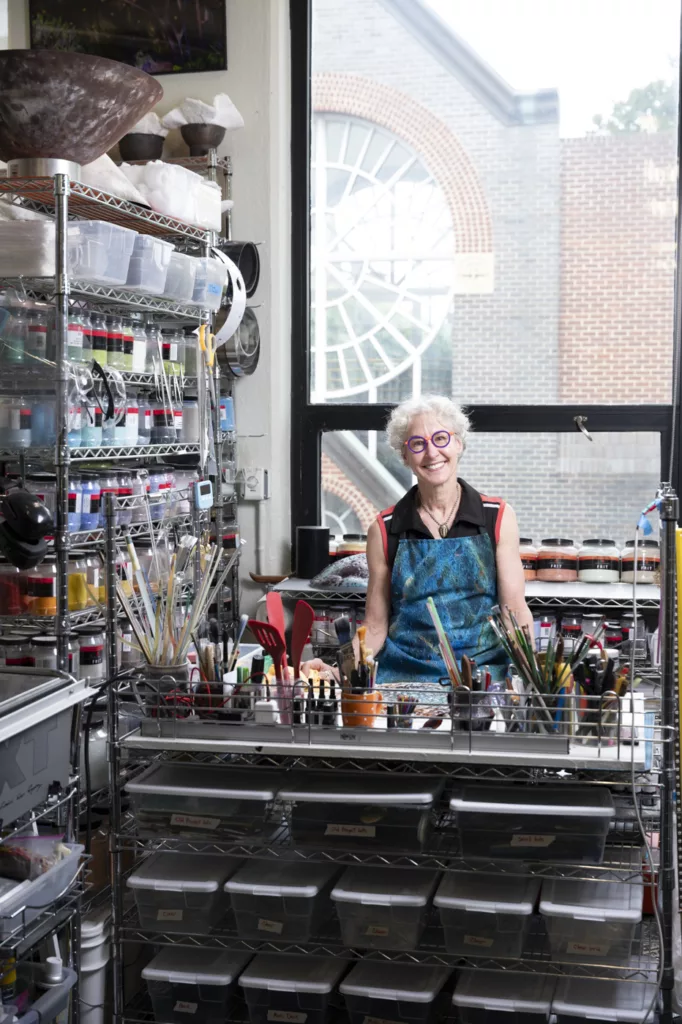
Alison Sigethy in her Torpedo Factory studio. Photography by Scott Suchman
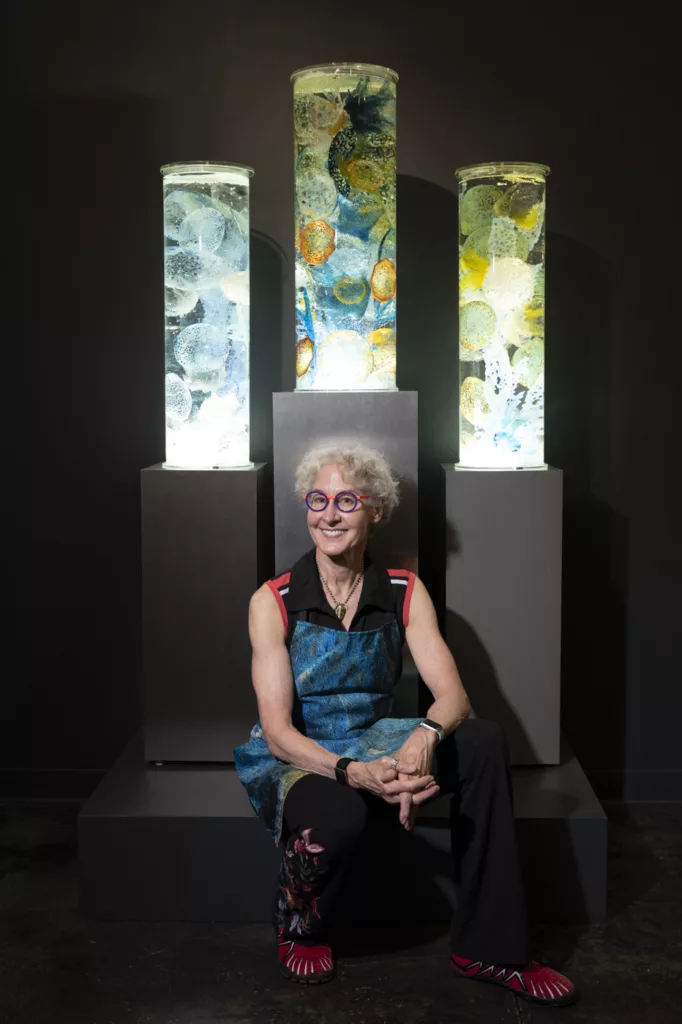
Crushing On Art
Sigethy’s artistic journey began with a childhood crush on oceanographer and filmmaker Jacques Cousteau and a transformative experience seeing Robert Breer’s moving “Floats” sculptures during a family trip to New York. She recalls that she was about 7, and the encounter revolutionized her understanding of art—that sculpture could incorporate movement. The next year, for her eighth birthday, her parents gave her a 10-gallon fish tank—her favorite gift ever—sparking a lifelong fascination with underwater environments.
She regularly joined her parents, both of whom were art lovers, on trips to New York to visit collections like The Steuben Gallery, the Whitney, and the Museum of Modern Art. Sigethy says she was constantly entranced by the art she saw, and recalls falling hard for sculptural crystal pieces, particularly Arctic designs by John Houston.
Like a detective uncovering clues, she found her artistic calling first through soap, transforming ordinary leftover slivers into miniature masterpieces. And she created clay birds during recess detentions—her chatty nature apparently had consequences—as her classmates played outside. Even then, her fingers couldn’t stay still—they were always itching to shape something magical from nothing, revealing an intensely creative spirit.
However, her path to becoming a celebrated glass artist was anything but direct. Before finding her medium, Sigethy studied theater and lighting design at Rutgers University and earned degrees in interior design and art history from Marymount University. Her varied career included work as a theater lighting designer, marketing executive, kayak coach, and wilderness medicine instructor before she discovered glass art in 2001.
“A friend convinced me to try making glass pendants in small kilns that looked like Crock-Pots,” she recalls. This revelation that glass could be accessible prompted her to immediately purchase a small kiln and begin creating in her kitchen. Her evolution eventually led her to the Washington Glass School and later to Alexandria’s renowned Torpedo Factory Art Center, where she continues to create today.
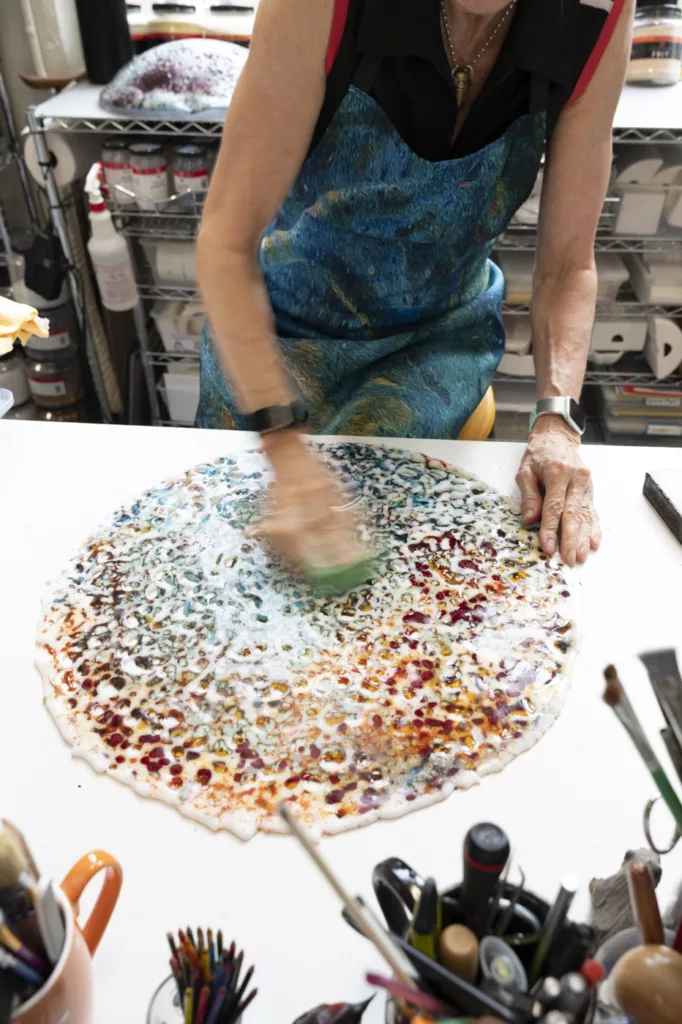
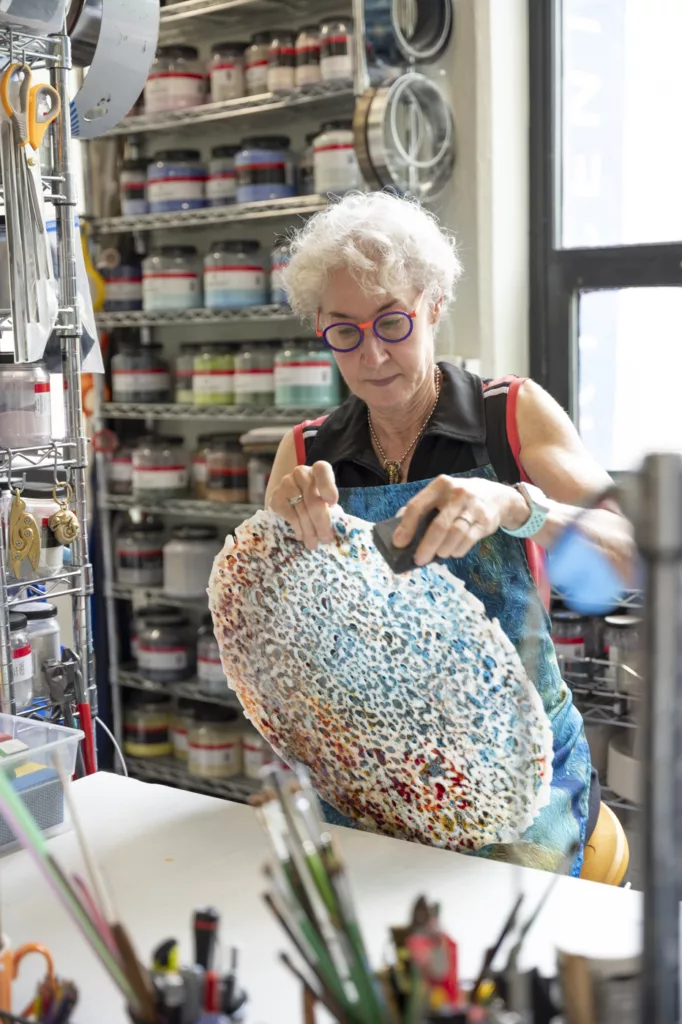
Sigethy at work on the details of a Sea Core.
A Perfect Marriage
What makes Sigethy’s work extraordinary is the marriage of artistic vision with precise engineering. Each Sea Core is painstakingly handcrafted and filled with a viscous liquid—a variation of mineral oil that took her years to perfect. The glass tubes themselves are custom-made in Germany, where special refractive properties nearly eliminate distortion—something she’s found impossible to source elsewhere.
“I choose glass because it allows me to manipulate color and transparency,” she explains. “Since Sea Cores are designed to be looked through, rather than simply looked at, the colors blend and form new combinations from every angle. I focus on the movement of the air bubbles and the patterns created as they weave through the glass and travel up the core.”
Behind each mesmerizing creation lies a complex system of mechanical components calibrated to create specific bubble patterns. Her background in theater lighting design provided technical knowledge that she now applies to her glass art. Each sculpture requires precise calculations of water pressure, air flow, and bubble formation—a delicate balance that dramatically alters the visual experience.
“There is a surprising amount of engineering that goes into my sculptures,” Sigethy acknowledges with characteristic modesty. “I guess I’ve always been a geeky girl, but I like figuring things out. Problem-solving has been a major part of every job I’ve ever had.”
The placement of internal components is meticulously planned to achieve subtle movement, while the external structure must be perfectly sealed to prevent leakage. This synthesis of artistic vision and engineering precision transforms her sculptures from static glass objects into dynamic, living ecosystems.
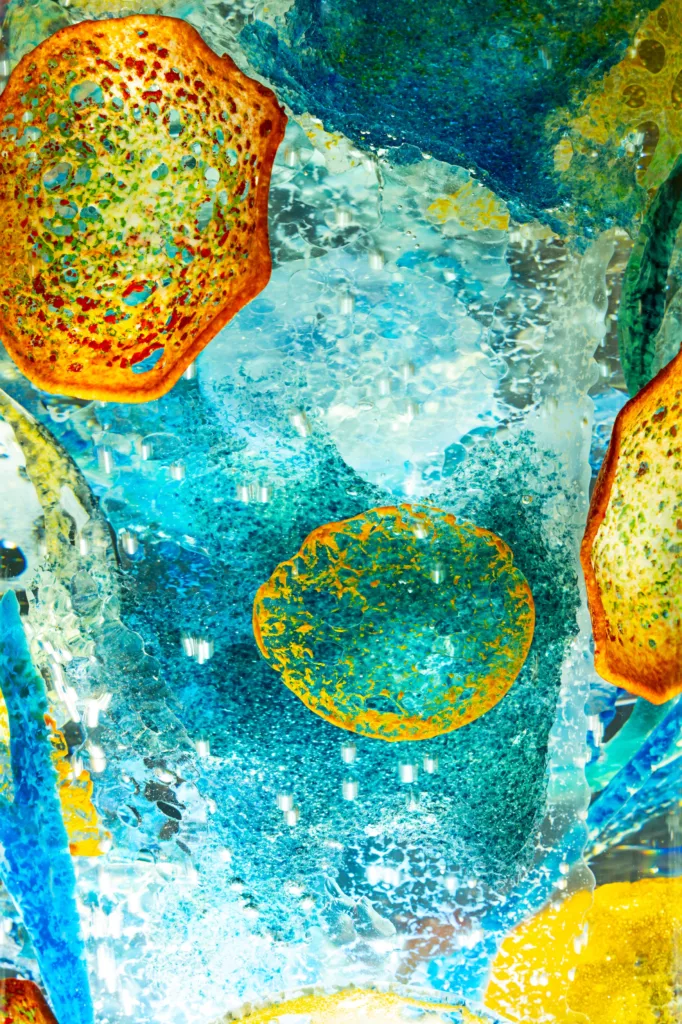
Creating Living Glass Environments
The process begins with client consultations where Sigethy determines preferences for color palettes and visual effects. Sometimes clients send fabric swatches or paint samples to ensure the Sea Core will complement its surroundings.
The creatures that go into each Sea Core are also determined through collaboration. They’re all glass and inspired by underwater elements like kelp, sea urchins, algae, shells, and whatever else Sigethy dreams up. The approach ensures each piece is uniquely tailored to its future home.
Sigethy carefully places each glass creature within the tube, sometimes anchoring them with invisible monofilament, but often they’re simply supported by their neighbor. “I plan the placement of each suspended creature in the bubble path to get subtle lifelike movement,” she explains. “This allows me to create living environments that generate the same excitement I felt as a child.”
The composition comes alive through hidden mechanisms producing bubbling effects that can be regulated from subtle and slow to fast and frenetic, depending on the liquid’s specific formula. The engineering specifications for each Sea Core are tailored to its environment and the client’s preferences. Sigethy also accounts for additional factors such as ambient light, viewing angles, and even the acoustics of the space.
“There are a lot of variables that change the experience,” she says. “Size and colors are obvious, but I also need to know, how important is sound for this client? Are exuberant bubbles or small champagne bubbles more suitable? Do the lights need to be dimmed or be controlled separately? These are small details, but they make a big difference.” Sigethy explains that her standard Sea Core sizes are between 16–30 inches high and between 6–12 inches in diameter; however, custom sizes are available. Prices start around $4,000.
The final step is lighting. Each tube is positioned on a custom-made stand and uplit, with all mechanisms hidden inside. Access is through a magnetic door. The stand can be a short plinth or a tall column. Every element is customizable—from the tube dimensions to colors, creatures, and display options—creating a truly bespoke artwork for each client.
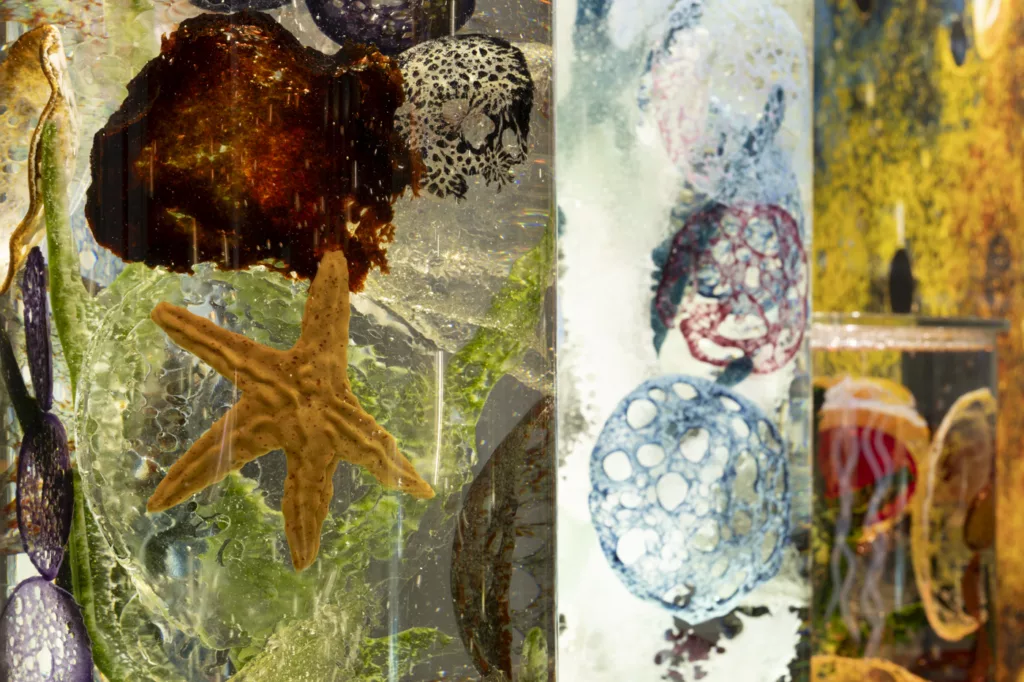
Private & Public
Sigethy’s Sea Cores have expanded from private collections into public and commercial settings, bringing their mesmerizing effects to broader audiences. In 2019, she created a monumental installation called “Ocean Stairway” for Maury Elementary School in Capitol Hill, transforming a three-story stairwell into an immersive deep-sea environment that delights students daily.
She also designed a contemporary chandelier for the renovated Maryland Theater in Hagerstown, a project that combined her backgrounds in art, lighting design, and theater. These larger installations demonstrate the versatility of her artistic vision and its adaptability to different contexts and scales.
“The sound of the bubbling water is incredibly soothing, even therapeutic,” Sigethy notes, expressing her goal “to see them become fixtures in hospitals and cancer treatment centers.” This vision highlights how her art transcends mere decoration to provide genuine psychological benefits to viewers.
Environmental Inspiration
There’s a profound environmental consciousness underlying Sigethy’s artistic practice. Her connection to water runs deep—not only has Jacques Cousteau been an inspiration, but she’s also a skilled kayaker who has competed in the Greenland National Kayak Championships, racking up eight medals in the competition.
The custom-fitted kayaks used in the competion are crafted from materials like whale bone, reindeer antlers, and sealskin in the traditional Inuit way. Competitions include rolling and harpooning, often performed in a tuilik, a sealskin dry suit that prevents water from seeping in. Additionally, Sigethy has paddled most of the famed and treacherous Northwest Passage, experiences that inform her artistic perspective and provide firsthand understanding of aquatic ecosystems.
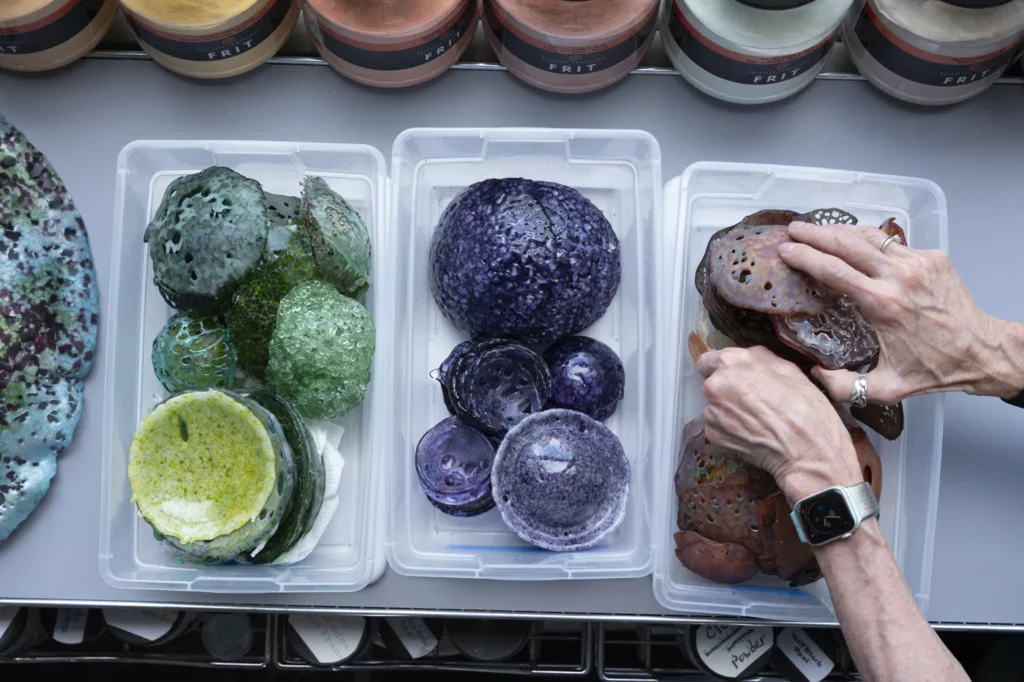
The Right Process
Unlike many artists, Sigethy works directly with clients rather than through galleries. “I build each sculpture for a specific client,” she says. “Working directly with them is the only way I can get all the details right to make the perfect sculpture. I’m not willing to compromise on that part of the process.”
Transportation presents challenges for these fragile works, but Sigethy doesn’t hesitate to personally deliver her creations—sometimes buying two plane tickets, one for herself and one for the Sea Core. This hands-on approach ensures each piece arrives safely and is installed properly in its new home.
Experience Sea Cores
Visitors to Alexandria can watch Sigethy at work at her Fantastical Glass studio on the third floor of the Torpedo Factory Art Center. Her workspace offers a glimpse into the intersection of art studio and engineering laboratory, with specialized tools—some commercially available, others modified or invented by Sigethy herself—to solve the unique technical challenges of her work.
But Sigethy is an artist at heart. “The arts are important because of the emotions they generate within us,” Sigethy reflects. “With every aspect of making a Sea Core, I’m striving to create beauty, calm, and joy that my clients will experience every time they view their sculpture.”
Her life has come full circle, evolving from a child fascinated by moving sculptures and aquariums to an artist-engineer creating living glass ecosystems. Her work captures that same childhood wonder while demonstrating the power of blending artistic vision with technical innovation. Each Sea Core serves as a testament to the magical possibilities that emerge when creative imagination meets skillful craftsmanship and ingenious engineering. FantasticalGlass.com
This article originally appeared in the August 2025 issue.

